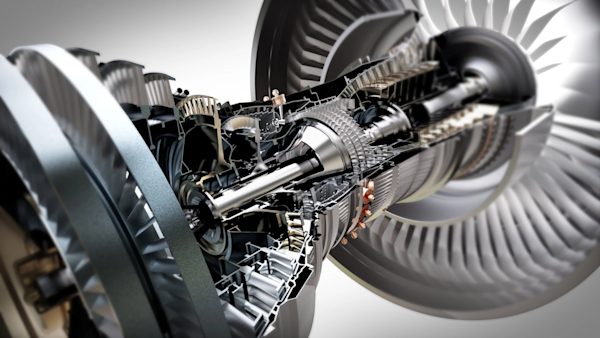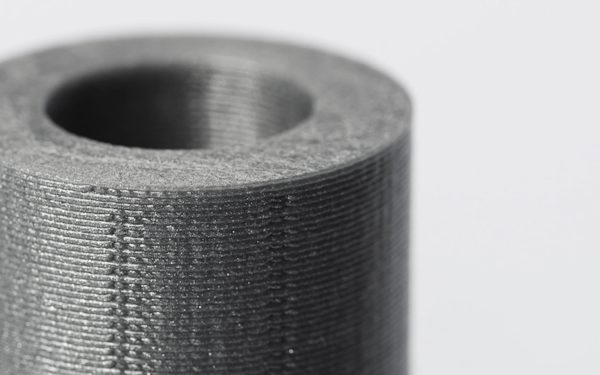Design for 3D printing
3D printing is a powerful and versatile manufacturing process. Optimizing the way you design parts can help you get more out this robust set of technologies. This section provides practical design tips for reducing costs, speeding up lead times and ensuring parts get produced to spec. Learn to get exactly what you need from your custom parts order.

3D printing STL files: A step-by-step guide
Learn how to avoid low quality 3D prints or unnecessarily large files by exporting your STL file in the correct resolution.

What is GD&T? How to reduce manufacturing errors and improve quality
What is Geometric Dimensioning and Tolerancing (GD&T) and how is it used? This article explores the basics of how and when to use GD&T to get the best results out of custom part manufacturing.

What is CAD modeling? Comparing design software for 3D printing
What is CAD modeling and why is it an essential tool for digital manufacturing? Explore the types of CAD software available for bringing ideas into the physical world via digital 3D modeling. Find the right software tools for your application.

How 3D printing grips, jigs and fixtures keeps manufacturing costs down
What are grips, jigs and fixtures and can you 3D print them? Learn the basics of grips, jigs and fixtures and how 3D printing these tools helps reduce manufacturing costs while ramping up the speed.

How do you design enclosures for 3D printing?
Learn how to optimize the design of your enclosure for 3D printing, follow a step-by-step guide on the design process and review the most common enclosure materials.

What are the key design elements for 3D printing?
Are you new to designing parts for 3D print manufacturing or need a refresher on essential design elements? This article provides the key design elements for creating digital models for 3D printing, no matter the additive manufacturing process.

How do you design snap-fit joints for 3D printing?
What are snap-fit joints and how do they work? Learn the benefits of 3D printing snap-fit connectors and clips. Get design and material recommendations for designing custom parts with snap-fit joints.

How much does 3D printing cost? Tips for reducing your manufacturing costs
Is 3D printing the most cost-effective option and how can you keep your costs down? Explore all the factors that determine the price of 3D printing, including how to reduce the cost of printing your custom parts.

How to design parts for FDM 3D printing
Learn how to optimize common design features - such as bridges, overhangs, pins and vertical axis holes - for FDM 3D printing.

What’s the right resin for SLA? 3D printing materials compared
What are the different materials available for SLA 3D printing? This article compares the main printing resins, including standard, tough, durable, heat resistant, rubber-like, dental and castable, by material properties. Find the best material option for your application.

What are the optimal shell and infill parameters for FDM 3D printing?
How do shell and infill properties impact the performance and cost of FDM 3D printing? It turns out these parameters have more of an effect than you may realize, so learning to optimize these features will improve the performance of your FDM custom parts while reducing manufacturing costs.

How do you assemble 3D-printed parts? Practical tips on threads & screws for 3D printing
What are the ideal ways to assemble 3D-printed components? This article compares different methods for designing threads for 3D printing and provides step-by-step instructions on how to install screws and other fasteners.

What’s the ideal filament for FDM 3D printing? 3D printing materials compared
What’s the ideal material to use when 3D printing parts with FDM? This article compares the most common FDM 3D printing filaments, including PLA, ABS, PET, Nylon, TPU (Flexible) and PC, by their material properties to help you find the best option for your application.

How do you design parts for MJF (Multi Jet Fusion) 3D printing?
Multi Jet Fusion (MJF) 3D printing can create highly accurate, complex industrial parts more efficiently - and potentially more cost-effectively - than other industrial 3D printing processes. This article covers how to design parts for MJF, common applications of the technology and key best practices.

What can’t 3D printers do? Understanding and overcoming 3D printing geometry limitations
What are the limitations of modern 3D print manufacturing? This article covers the major factors that will affect the quality of your 3D-printed part, including size, element thickness, how watertight it is (manifold) and curved surfaces. Read on to understand the limitations of 3D printing.

How to design parts for SLA 3D printing
A comprehensive guide for 3D printing with SLA, covering the printing process, design specifications, material options and technology limitations.

How to design interlocking joints for fastening 3D printed parts
Learn how to design and 3D print interlocking joints (e.g. finger-, dovetail- and puzzle joints) to assemble your 3D printed parts.

What is design for manufacturability (DFM)?
Design for manufacturing (DFM) means taking a design-first approach to manufacturing. In this article, we look at the overall DFM process, the necessary steps for a successful outcome, examples of DFM done right and how to get the most out of your own processes.

How to design living hinges for 3D printing
This article discusses the advantages of living hinges and present-day design rules and material recommendations when using 3D printing to produce living hinges.

How to design parts for SLS 3D printing
This article discusses how to design SLS 3D printed parts including technical design specifications, materials, limitations and an introduction into the post-processing options available.

How does part orientation affect a 3D print? Practical design tips for additive manufacturing
How important is part orientation and will it make or break your 3D print? This article explores how part orientation affects the accuracy, strength, print speed and surface finish of custom 3D-printed parts.

How to design parts for material jetting 3D printing
This article explains how to design Material Jetting 3D printed parts including technical design specifications, materials, limitations and an introduction into the post-processing options available.

What is dimensional accuracy in 3D printing and how do you achieve it?
What is dimensional accuracy in 3D printing and how do you know which technology will yield the most accurate results? This article compares the expected dimensional accuracy of various 3D printing technologies to help designers and engineers choose the right solution for their application.

How important is layer height for 3D printing? 3D print better parts with the right layer thickness
How important is layer height for 3D printing and how much of an impact does it have on your custom parts? It turns out layer height can have quite an effect. In this article, learn about the importance of layer height and how it affects the quality, appearance and strength of 3D-printed parts.

What are the top STL file errors? Here's how to fix them
What are the most common STL file errors and how will they affect your ability to export models for 3D printing? Learn to identify the errors you may encounter when working with STL files and how to fix them so they don't delay your next 3D printing run.

How to design parts for metal 3D printing
A comprehensive guide for metal 3D printing covering the printing process, design specifications, material options and technology limitations.

What are supports in 3D printing? When and why do you need them?
What are support structures in 3D printing? Depending on the technology you use to produce parts, you may need to print support structures to maintain part geometry. This article covers what support structures are in 3D printing, when they’re needed and how supports may affect the quality and price of your part.

How to design parts for binder jetting 3D printing
A comprehensive guide on designing parts for Binder Jetting, covering the printing process, design specifications and material options.

Jewelry 3D printing applications
This article discusses how 3D printing is being used to produce high detail, custom jewelry through investment casting and direct metal printing.

3D printing for aerospace and aviation
How does 3D printing accelerate innovation in the aerospace and aviation industry? In this article, we explain how 3D printing and additive manufacturing are commonly used in aerospace and how they improve prototyping and end-use part production for these industries.

Medical 3D printing applications
This article will discuss the requirements within the medical industry that make AM an ideally suited technology for many applications.

What materials have the best repeatability?
Seeking consistency and predictability in your parts? Check out our guide on repeatability, which highlights the materials that will perform the same way time and time again.







